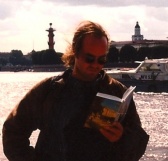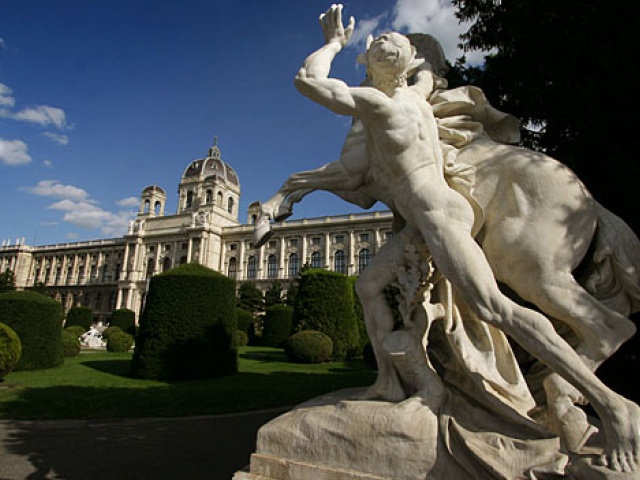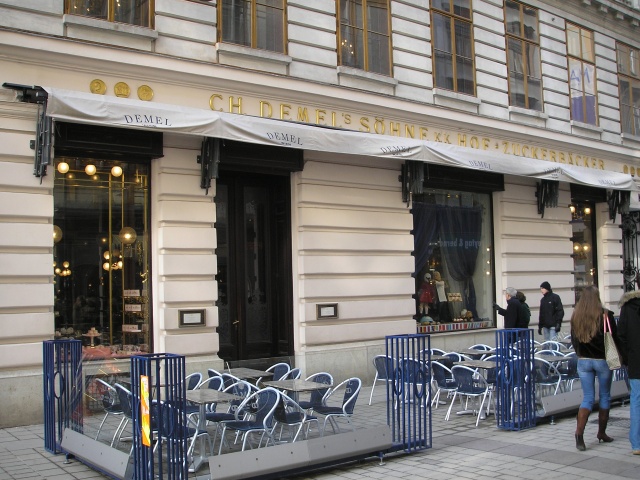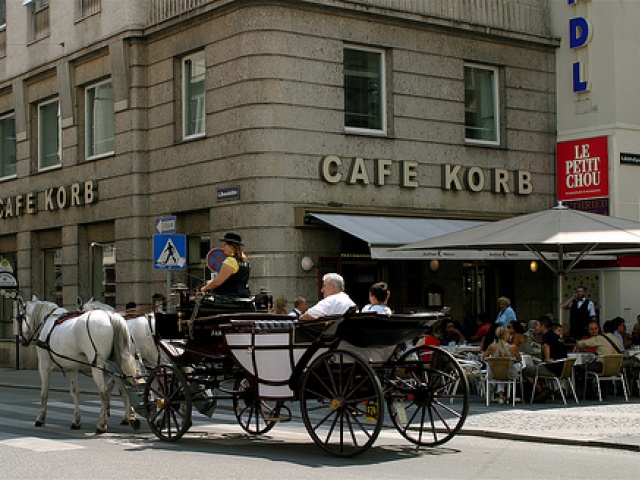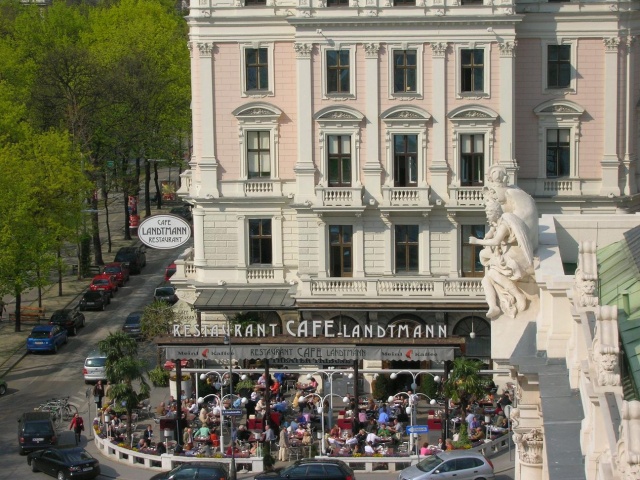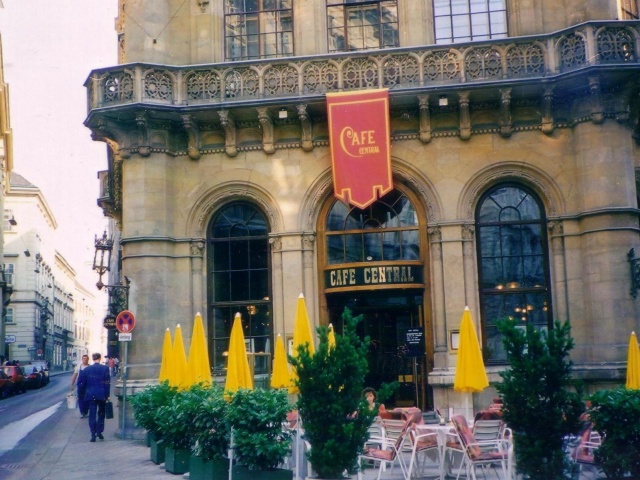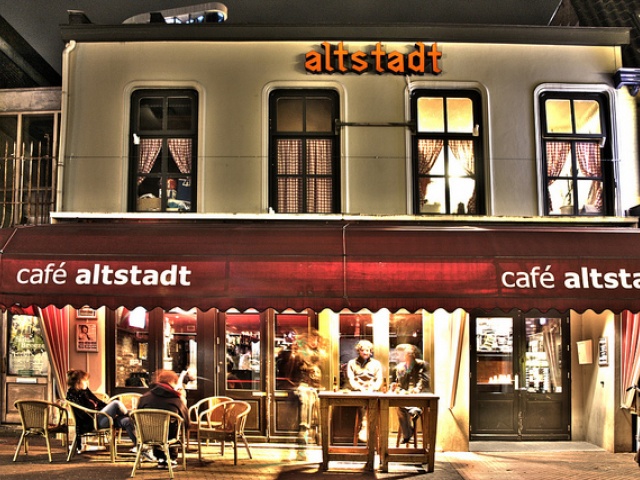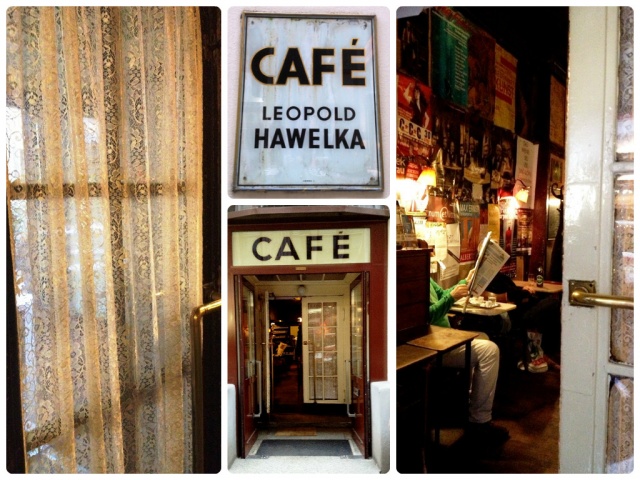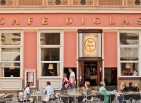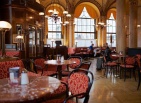Grand Cafés :
Vienna, Austria
Vienna’s unique “Grand Café” Kaffeeklatches, perfect for Oktoberfest.
|
| Share |
my second wind, I ducked into the nearby Judenplatz, the former Jewish Ghetto, where I paid a quick visit to the Café Alstadt, which didn’t move me.
Oho! Maybe it was time after all to check my e-mail, exercise my pop-up-menu eyes and football-shaped occipital lobe even though I did not have a regular job to go back to and could travel indefinitely if I had my druthers.
Hence, I suddenly had an ah-ha experience, like an unsold soul illumined by an MRI, while the light wind sucker punched my windbreaker, combined with little bouncing baubles of hail. . . .
Kunsthistorisches Muzeum - Vienna - Get Jacked Up On History
Thus, I retreated into an open opulent palais, the Kunsthistorisches Muzeum and sat among the displays, reading Richard Basset’s “A Guide to Central Europe” (Penguin Books, 1987). Mostly to relieve the lonelies of the road, antsy with apercus.
I read about St. Stephen’s Cathedral (bombed during World War II but rebuilt according to the original blueprints), the beating heart of the city like a trot of Lippanzeer stallions in the Winter Riding School built in 1722. I could not believe that Habsburg rule lasted over 800 centuries! In fact, the empire from Otto I (crowned in 962) to Francis I (rule ending in 1918) stretched all the way from the North Sea to the Mediterranean Sea. At its zenith the Austro-Hungarian Empire included not only Austria and Hungary (albeit eventually divorced from Germany and Italy), but also much of present-day Romania, Czech Republic, Slovenia, Croatia, Montenegro, Bosnia, Slovakia, Luxembourg, and parts of Poland and Serbia.
Incidentally, my friend Erik D’Amato, an American expat publisher of the Magyar website Pestiside (www.pestiside.hu) claims he met the last known Habsburg, Otto van Habsburg, while ogling the awesome the spires and domes of the Austrian capital, at an undisclosed location, or perhaps he was just pulling my leg.
In some ways, reading about the “sights” was preferable to actually visiting them, in the same way that grainy reality only becomes clear in retrospect and in revisionism. For example, I didn’t know that the progressive Emporer Franz Joseph (ruled 1780-1790) freed both the Serfs and the Jews. I also wondered about Vienna’s “Mannerism Movement,” which seemed to claim that art was only a mannerism. At least, this beat pub-crawling through Vienna’s “Bierstubes” (beer banks) and “Weingartens” (wine gardens).
After a quick pick-me-up at an undisclosed location, serving “Schlosserbuben” (chocolate nut pudding), similar to Nutella ™, I went to see the embalmed hearts of all the Habsburgs in the “Loretto Chapel” of the Neo-Classical Augustine Church. Yick.
Café Hawelka - Vienna - Off The Beaten Path
And then on to Café Hawelka, run by an impressive Frau off the beaten paths of the Herengasse, Graben, and Kohlmarkt, which look like they were built specifically for tourists. But this city is still filled with ”hidden neighborhoods, such as the Jasomirgottstrasse (“So Help Me God Street”) and the Schonlaterngasse (“Land of the Beautiful Lanterns”). Jesus, I felt like a frankfurter with “liberty cabbage” (a.k.a., “sauerkraut” or “choucroute”) with all the info overload.
Heading down the Singerstrasse to the Deutsch “Ordenskirche” (The Church of the Teutonic Order), I checked my tourist map for the Hofburg “Crib”, which purportedly held Charlemagne’s Sword.
Café Landtmann - Vienna - Fit For An Emperor
Last stop: Café Landtmann (4 Dr. Karl Lueger-Ring)—once a hangout for the Emporer Francis I and the Empress Maria Theresa, back when linoleum was a new invention.
I felt fortunate enough to step backward in time, surrounded outside the awesome edifice by horse-drawn “Fiakers,” to the age of the Holy Roman Empire, which was neither holy nor Roman.
What about the Café Mozart (2 Albertinaplatz)? Nah!
Instead, with my Walkman tuned in to the famous Vienna Boys’ Choir, I stopped awhile at the “Nachtung Markt” to buy prezzies like elderberry balsamic vinegar, sweet palatschinken (sweet pancakes), and a fanciful piece of Marzipan resembling Homer Simpson. . . .
“Doh!”
Or, maybe bite the head off a “kugelyn” Obama!”
ORDERING LIKE A PRO: TYPES OF WIEN COFFEE
-
1. SCHWARZER (espresso)
-
2. BRAUNER (espresso and warm milk)
-
3. VERKHERTER (latté)
-
4. MELANGE (cappuccino)
-
5. VERLANGERTER (American)
-
6. FLAKER (coffee with rum and whipped cream)
THE DIRTY DOZEN: THE TOP 12 GRAND CAFES OF VIENNA:
1. CAFÉ GRAND: (1880): (9 Kaertner Ring)): This typical Fin de Siecle “grand café,” often confused with the Café Central, on the first floor of the Grand Hotel Wien, is on the Kartner Ring near the Vienna State Opera. Try, the excellent spongy “Guglhupf” (Ring Cake) and coffee to die for, while wallowing in their excellent musical taste: ....




